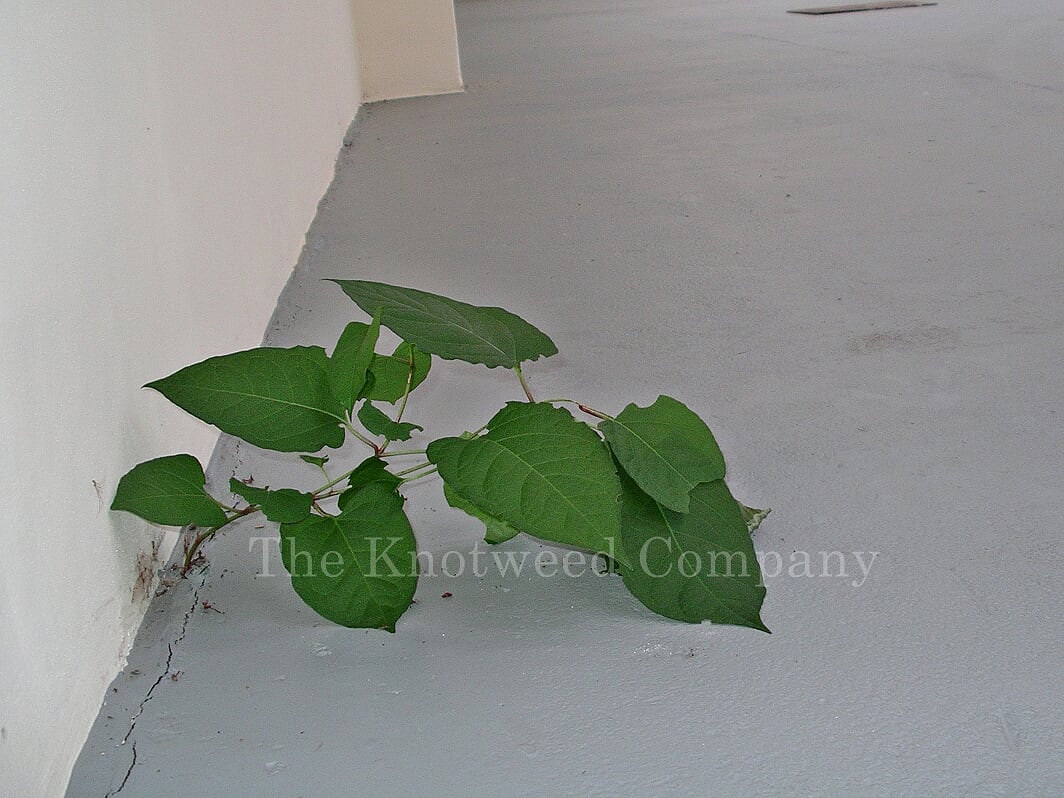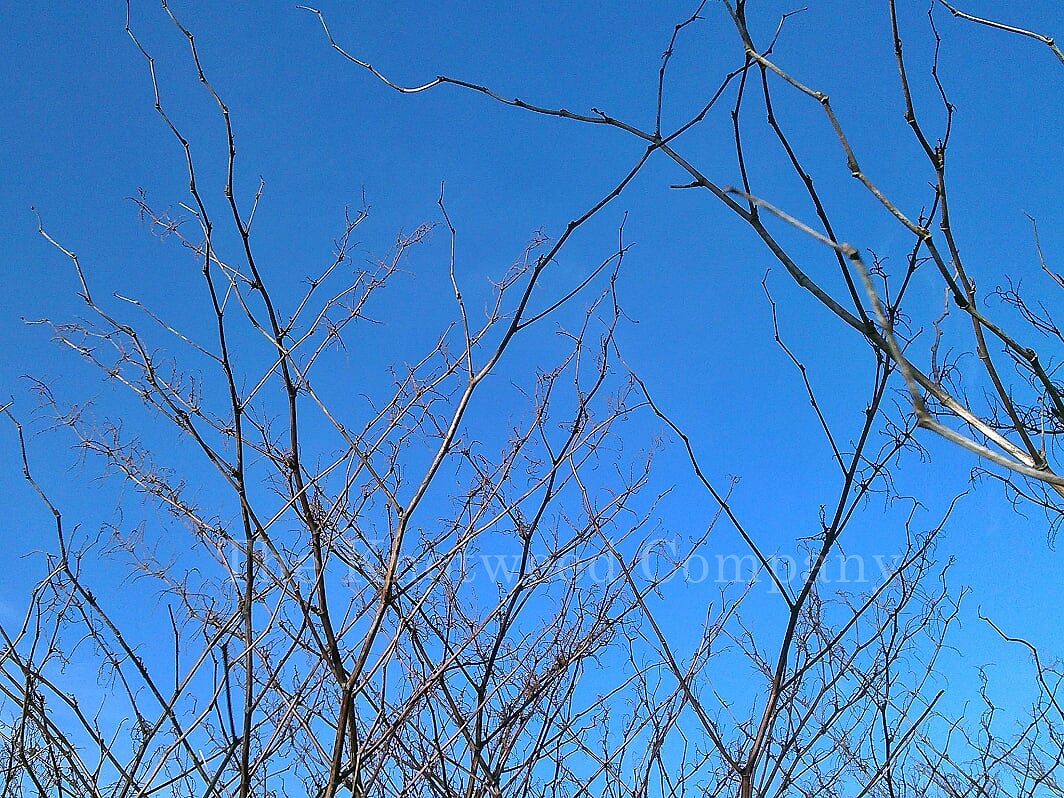The History and Biology of Japanese Knotweed
History

People often ask who was to blame for introducing Japanese knotweed (Reynoutria japonica, formally Fallopia japonica) to the UK. His name was Philipp Franz Balthasar von Siebold (1796 – 1866), and he was a German physician who was working for the Dutch army when he was posted to Japan. Being a keen botanist, von Siebold collected as many native plants as he could during his time in Japan and brought them back to Europe with him.
In some circles von Siebold is celebrated for introducing many popular species to European gardeners, such as Hosta and Hydrangea otaksa. Unfortunately, he also brought Japanese knotweed back with him and marketed it aggressively throughout Europe. He sent unsolicited samples of the plant to nurseries in Britain, including Kew, and in the second half of the Nineteenth Century it became an incredibly popular species, mainly as an ornamental plant but was also marketed as a fodder crop and as a means of stabilising riverbanks. It was only at the start of the Twentieth Century that warnings about the plant began to be voiced by such organisations as the Royal Horticultural Society. By this time, knotweed had become well established and, despite the warnings, it continued to be sold and planted in Britain until legislation to prevent this was passed in 1981.
We must be grateful for one thing at this point: von Siebold only brought back one female Japanese knotweed plant. Because he did not bring back a matching male plant, all Japanese knotweed in Europe is a female clone of the original plant. This makes the extent of its spread throughout the UK all the more remarkable since it has been achieved purely through vegetative regeneration (see ‘Biology’ below) and not through the germination of seeds.
Biology and Structural Damage
Knotweed typically grows in dense colonies (known as stands) which are all interlinked through the rhizome system. Stands can range in size from small areas of 1 square metre to very large stands, perhaps covering a hectare or more.

Japanese knotweed is an herbaceous perennial. This means that the plant lasts for an indefinite number of years and does not die off after setting seed. The main way in which it spreads is via human activity. Essentially, many parts of the plant can, if broken off, grow into a new plant given the right conditions. The most usual way is for rhizomes (the underground root system, which is used to store nutrients) to be fragmented and spread to new areas. The rhizomes are easily identified; normally they are brown, knobbly and hairy on the outside. They snap easily (like a carrot) and are orange coloured within.
In the spring, Japanese knotweed grows extremely vigorously. It uses stored energy in the rhizome system to grow at rates of 300mm per week in the early period of emergence ‐ perhaps greater in some cases. This energy can also be used to break through obstructions, provided they are weak enough or damaged enough, such as roads, pavements, patios and walls. It is worth pointing out that knotweed rarely causes damage as a result of rhizome penetration – which is how most people believe it to cause damage. Generally, damage is caused by emerging stems or by the pressure caused over time by a growing crown in an enclosed space. However, the fact that structural damage can be caused at all is why Japanese knotweed is such a problem to the construction industry and also to the home owner.
Knotweed is more likely to damage a single-skin, poorly pointed, external brick wall than a well-constructed, well pointed, solid, multi-skinned foundation of a residential property and will not, contrary to popular media belief, bring a house crashing down just because it is growing in close proximity. It needs a weakness to exploit in order to have any significant impact, though there is an important exception to this rule. If a new building is constructed directly on top of a well-established knotweed stand without the rhizomes being removed from the ground prior to construction, the knotweed will often have sufficient energy to grow straight up – almost regardless of whatever has been built over it – and find a route to the surface. The resulting damage can be extremely expensive to rectify and could lead to a partial or total demolition of the structure to enable the knotweed to be remediated.

The plant (in normal conditions) will reach a height of between 2-4m. Although it may appear large above ground, below the surface it is bigger still. Its underground spread can be extensive and rhizomes may be found up to 3m deep and up to 7m distant from the nearest visible growth. That said, it is more common to find a spread of 2-3m laterally and 1-1.5m deep in the average knotweed stand, unless the plant is extremely well-established. It has been estimated that the rhizome structure of an established knotweed stand can account for over 65% of its total biomass.
During the winter, knotweed retreats into a state of dormancy. The dormancy is triggered by the stress of colder temperatures and frosts. At this time, the plant will senesce i.e. draw all of its moisture and nutrients from the stems and leaves down into the crowns and rhizomes. It will then go into a mini-hibernation, storing the nutrients below ground throughout the winter until the growing conditions improve (warmer and wetter temperatures). It is by using these stored nutrients that the knotweed can grow so vigorously in the spring. As a consequence of this cycle, the knotweed will appear quite dead during the winter. Indeed, all of the top growth will be dead and, where they are thick enough, the brown and brittle stems will remain upright in situ. Below ground however, the knotweed is very much alive.
Dormancy is part of the knotweed’s natural 12-month cycle. Therefore, if over-zealous attempts to control, treat or eradicate the knotweed are made, its natural response can be to retreat into dormancy until such time as the threat has passed. There is insufficient research on the longevity of knotweed rhizomes to remain dormant but viable, though periods of 20 years have been recorded.
As it does not have a male partner, Japanese knotweed does not spread by seed in the British Isles. Any seeds that are produced (usually through hybridisation) are not normally viable and often die off during the winter.
Identification
Japanese knotweed (Reynoutria japonica, formally Fallopia japonica) is common throughout the British Isles. While it often grows in damp conditions, it can be found on dry, droughty soils, in coastal marshland, railway ballast, derelict land and domestic gardens. It is probably true to say that if you are reading this in the British Isles there will be some knotweed within a couple of miles of where you are now ‐ and possibly nearer. Each season provides a specific means of identifying the plant.


For more details on the appearance of the different parts of the plant at various times of the year, please go to our Photo Gallery.
Please note that Japanese knotweed is not the only form of knotweed in the UK. Visit our Other Knotweeds page for more information.
Please read our cookies and privacy policy here
Copyright © 2018 · All Rights Reserved ·